- Policy
- Posted
Saving grace

The government recently announced a fund of e100 million for energy upgrading Irish houses in 2009, to be divided equally between low income and middle income earners. Focusing on the latter, Jason Walsh looks at the details of the Home Energy Saving scheme and speaks to key figures in the industry to get their views on the ingredients needed to make the scheme a success
Announced by Green Party ministers Eamon Ryan and John Gormley on 8 February, 2009, the National Insulation Programme for Economic Recovery has a four part agenda: to improve the quality of Ireland's housing stock, to promote green industries, to revitalise the struggling construction sector and to get Ireland's economy moving again.
Fixing the building errors of the past – of which there are plenty – it's an audacious plan and while it alone will not stimulate the economy, it does amount to direct aid stimulus in the form of e100 million over the course of the next twelve months.
Announcing the investment, energy minister Eamon Ryan said, “This programme will provide a welcome boost to the economy. Central to government spending in sustainable energy is to get the economy back on track. We need to replace the spending and lending that has contracted and re-focus our public and private investment."
With this focus on investment in mind, the programme, administered by Sustainable Energy Ireland (SEI), will deliver two tranches of e50 million each to householders in the form of grant aid in two schemes. The Home Energy Saving (HES) scheme is aimed at private middle- income homes while the Warmer Homes scheme and local authority housing targets low-income private homes and rented local authority housing. In total, 50,000 houses are expected to be upgraded to modern standards of energy efficiency and 4,000 new jobs are expected to be created.
Saving at home
Set to open for applications by late March, the HES scheme allows for homeowners to receive grant aid for attic and wall insulation, including, filling cavities, external insulation and dry-lining, as well as heating controls and replacing old boilers with high efficiency models. Homeowners can apply under each category and must apply for a minimum grant of e500.
This is seen as a first step in getting the nation's older houses – the cut-off point being houses built prior to 2006 – in line with the higher standards that prevail elsewhere in the European Union.
In an e-mail to Construct Ireland, minister Ryan said: "The Home Energy Saving scheme will be a key factor in Ireland’s move towards a passive housing standard. Ireland’s housing stock is among the oldest in Europe and by their very design, the majority of these homes are energy inefficient and poorly insulated.
"This scheme, along with the revised building regulations, will completely reform the energy efficiency levels of Ireland’s houses, of which significant numbers were constructed pre-1980. It will also allow homeowners to substantially reduce and even halve their energy bills, with savings of up to e700 per annum."
Although homeowners can apply for funding for a range of measures, the largest grant available for a single measure is e4,000 toward external insulation – Construct Ireland had suggested a figure of this order to the minister late last year. The argument for setting a higher level of funding for external insulation is threefold: it tends to be the most expensive form of insulation, and therefore requires a more substantial grant; it’s perhaps the most effective means of insulating, lending itself to the particular benefits of reduced cold-bridging; and for many single leaf house types, it may be the only practical form of wall insulation, in particular where homeowner’s can ill afford to lose floor area.
The grant can be applied for in conjunction with other relevant existing schemes: "The Greener Homes scheme applies to existing houses, of one year or more," wrote Eamon Ryan. "Phase III is ongoing and funding is available for homeowners wishing to install energy efficient and renewable technologies such as solar, heat pumps and biomass boilers among others. It is envisaged that Phase III of this scheme will continue running until all available funds are distributed."

A house being externally insulated by limerick-based external insulation specialists Greenspan
The two schemes thereby offer homeowners subsidies on a whole house energy refurbishment. Homeowners will not only be encouraged to retrofit insulation, boilers and heating controls, but also renewable energy systems such as solar panels, heat pumps or wood pellet, chip and log gasification boilers.
A key question is whether the HES scheme will continue after 2009. Responding to questions from Construct Ireland, a Department of Communications, Energy, and Natural Resources spokesperson wrote: "A budget of e50 million has been allocated to this scheme for 2009 which will see insulation solutions retrofitted into tens of thousands of homes throughout the country. Minister Ryan is confident that demand for this scheme will continue well into the coming years and it is anticipated that adequate funding will be provided to meet this demand."
Decoding the official-speak, that appears to be a guarded yes: the scheme will continue if up-take is high and the results successful. This should provide encouragement to contractors seeking to revitalise their business with the prospect of new customers in the coming years.
The Warmer Homes scheme, meanwhile, tackles lower-income households and is already ongoing under the aegis of 20 community-based organisations throughout Ireland. Upgrade work available under the Warmer Homes scheme includes lagging jackets, attic insulation, cavity wall insulation and draught-proofing.
Economic benefits
The government estimates that the plan would create 4,000 'green collar' jobs, particularly helping unemployed construction workers.
While the plan has been generally welcomed, there are some dissenting voices. Dr Richard Tol, an economist with the Economic and Social Research Institute has written that the cost of creating jobs may be too high and claims that the programme overpays for reductions in CO2 emissions by a factor of 50. "Will the national insulation programme do harm? I do not think so. But, it is a decidedly second best way of reducing emissions, creating jobs, or reducing poverty," he wrote.
Still, it does represent a move toward job-creation and lower carbon emissions, both of which are considered vital in today's Ireland. On the one hand, the last year has seen an 80.4 per cent increase on signings to the live register while, on the other, Ireland must reduce its carbon emissions or else face punitive fines at the international level. Although Ireland may not end up facing fines under the Kyoto protocol due to the sharp economic downturn and corresponding fall in emissions, there is no doubt that stricter emissions targets will follow. If any further motivation is needed to instigate en masse energy savings, it surely exists in the circa e6 billion that left the Irish economy in 2008 to buy in fossil energy.
It is hoped that the development of the plan is a step toward re-starting Ireland's economy with a growing sustainability industry. A Department of Communications, Energy, and Natural Resources spokesperson told Construct Ireland: "Minister Ryan acknowledges the valuable input of a number of contributors, including Construct Ireland, as this policy was developed. The construction industry will be central to this scheme as it rolls out and this scheme will act as an incentive and will create employment opportunities for up to 4,000 builders and assessors. It will contribute to the development of a new type of sustainable construction which will help move Ireland to a passive housing standard, and Minister Ryan welcomes the valuable input of experts in this field."
Getting going
A large scale programme such as this cannot be delivered without proper planning and testing. In this case a pilot programme was carried out in various parts of the country including Limerick-Clare, Dundalk, Tipperary North and clustered applications anywhere in the country.
"The pilot scheme has shown the scheme will address the issue," said Paul Gilmartin of insulation manufacturers and installers, the Gilmartin Group. "People have become energy conscious in recent years."
Gilmartin thinks that now is the time to get people interested in improving their homes: "In times of slowdown people will always look at way of reducing spending on items that will devalue in time such as new cars, instead spending on things that increase value.
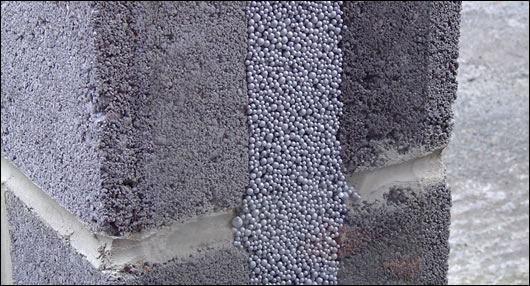
A sample of the Gilmartin Group’s bonded bead full fill cavity wall insulation
"One would have to be positive about the initiative taken by the minister – he has to be congratulated for it. People that have come into the scheme have found it to be positive. Sustainable Energy Ireland has learnt a lot from the pilot scheme and you have to say it's been a success and the problems were identified – for example, it’s stipulated that houses with hollow block walls have to be insulated internally or externally," he said, alluding to the alarming trend towards injecting foam into hollow blocks in the Dublin area.
One novel aspect of the Home Energy Saving scheme that Gilmartin participated in during the pilot phase is 'clustering'.
Clustering is exactly what it sounds like: the grouping together of similar houses requiring similar work for the benefit of all parties. The homeowners get energy upgrades and the contractors get a larger pool of manageable work. From the government's point of view it should promote wider adoption of the programme.
Paul Gilmartin reports that the clustering aspect of the pilot scheme was a positive experience: "The cluster was the most successful element. People got confidence [from the process] and it created a community spirit. They selected a contractor, got a volume discount and could also vet their contractor."
However, Gilmartin says that geography is a vital aspect of clustering: "The non-geographic clusters weren't as successful."
One non-geographic cluster in Galway, composed of county council staff started out with sixteen participants but many quickly dropped out: "The geographic spread was huge and the cluster ended up as five," he said. "The bond just wasn't as strong."
Whether geographical or not, the real benefit of clustering for the homeowner is in economy of scale, an aspect that well-known environmentalist Gavin Harte, is hoping to ensure for homeowners through a new approach he’s developing with Codema, the City of Dublin Energy Management Agency: "The idea is called the Energy Smart Community," said Harte.
"The idea is to do it in energy smart clusters. Myself and Codema can provide the professional and technical assistance that communities need so that we can put buying power in the hands of the homeowner."
Harte's plan is to negotiate with contractors on behalf of larger groups of homeowners, thus ensuring a lower price and a quality job: "It's aggregating houses of a similar type – by coming together we can increase the value of the project and gain leverage with the contractor," said Harte.
Despite the title of the event to launch the HES and Warmer Homes schemes – the National Insulation Programme for Economic Recovery – the HES scheme covers more than just insulation.
"You can get several remedial measures: insulation, energy controls and a boiler," said Peter Carey of Comeragh Controls. "They've taken a good step by recognising controls as a separate grant as there's not much point in having an efficient boiler if it's not managed properly."
"The boiler grant requires the controls but you aren't required to change the boiler, you can get the controls for an existing system," he said.

There is an alarming trend towards injecting foam into hollow blocks, particularly in the Dublin area

Good heating controls, such as the iCon system from Comeragh Controls, can greatly improve the efficiency of a heating system and are eligible for grants under the HES scheme
Control systems of the sort that Comeragh offer enable the heating of a home to be programmed and altered for different zones, with weather compensation and adjustments to match occupancy patterns resulting in substantial efficiencies.
"A boiler interlock is critical – a lot of times people might have a stat on the wall but it's not been wired-up properly," said Carey.
Working well
Central to any success the programme enjoys will be the issue of quality, in terms of both product suitability and quality control in installation.
"Products used must have an Irish Agrément Board certificate or similar certification," said the Irish Agrément Board's Sean Balfe. Interestingly, ‘similar’ certification includes European Technical Approvals (ETA), whilst SEI also list Irish, British of European standards guides and Building Research Establishment certification, amongst others. The decision to extend the certification beyond Agrément into the broader ETA framework may prove crucial in terms of creating competition amongst product suppliers and thereby driving down price. Many robust, innovative products, in particular in the area of external insulation and render systems, do not carry Irish Agrément certification, their manufacturers having instead opted for the pan-European ETA as a more broadly-applicable alternative.
Balfe also told Construct Ireland that the Irish Agrément Board intended to ensure that work was carried out properly: "Our schemes show the installers are adequately trained – we audit them every year. We look at them carrying out an installation and go to their offices and check their records, we make sure they're correctly advising people and that the proper procedures are taken. We have records that can be traced back to the installers."
The issue of contractor competency is not one that will go away, however until someone involved in the scheme takes liability for the use of defective design, workmanship or products. One product manufacturer told Construct Ireland that any grant scheme will always "bring the cowboys out of the woodwork."
Patrick Durkan of Durkan Eco Fix mirrors this view: "Realistically the conditions are not stringent enough. It's one thing having employer's liability and public liability insurance but it's not enough. I have some reservations about the quality that will be there," he said.
"Regulation is my biggest concern: what happens if someone doesn't perform? We've all learned in the current climate that regulation is vital and it has to be enforced. Someone has to take responsibility.
"I'm very positive about the scheme. I think there are areas that need further input. I think the minister has got it right. The next step is to get feedback from the customer – seeing how they want to spend the money. We're very big on customer feedback. That has yet to be tested."
At present, contractors are required by SEI to provide appropriate C2 tax clearance, the aforementioned liability insurance (which only covers the period of the work being done) and sign-up to a code of practice. Many in the industry feel that this is not a sufficient guarantee.
One area Construct Ireland has been particularly looking into in the context of the HES scheme is insurance. Typically, some form of indemnity insurance is associated with this kind of work, however there are a number of difficulties with this kind of policy. Firstly, settling an indemnity claim is typically a lengthy process in Ireland – one insurance industry insider claims that six years is the average. Clearly this is too long for unhappy householders, especially where they’re experiencing potential health-threatening problems such as mould growth. Secondly, discovering precisely who is to blame – the product manufacturer, the supplier, the contractor, other parties involved in the work – is likely to become a byzantine process, but one that has to be followed through if a claim is to be successful. Thirdly, Construct Ireland has learnt that a homeowner would typically only be able to settle an indemnity claim if the contractor’s policy was still valid at the time of asking.
One proposed alternative, favoured by Construct Ireland, is the development of latent defect insurance. This kind of policy would protect homeowners for up to ten years, paying out for repairs in the case of a defective product or poor installation – essentially any fault that was not traceable to the homeowner's actions. As latent defect insurance policies cover the cost of repair work, this type of policy also lends itself towards a speedy resolution. It’s not in the insurer’s interest to have lengthy delays over paying out if the damage increases – as could be the case with damp problems – and the cost to the insurer therefore rises.
Construct Ireland is currently developing and discussing this idea with several insurance providers, but none were willing to speak on the record at present due to commercial sensitivities. For its part, SEI has indicated a willingness to make latent defect insurance mandatory for the scheme if at least two insurance companies come onto the market with suitable products.
Such an approach is arguably the best - and in practical terms, perhaps the only – way to regulate the standard of work funded under the HES scheme. To put it in simple terms, a suitably informed insurance provider will not provide insurance cover for works that incorporate a poor quality of products, designs or workmanship and are therefore likely to lead to a claim.
There is much to suggest that, in several regards, the HES scheme appears to be on the right track. However, questions remain: how widespread will uptake be and can the issues of quality control, certification and insurance be settled, and settled quickly.
If one or more of the banks steps up to the plate – and Construct Ireland is also in discussions with one major bank in this regard – to offer competitive financing, such as a reduction in interest rates, the scheme is likely to produce results. However, without some iron-clad way of guaranteeing the quality of work the country – and industry – could be opening itself to potential problems in the future.
- Articles
- policy
- Saving grace
- energy upgrade
- grant
- home energy saving scheme
- insulation
- Heating
- efficiency
- Ryan
- gormley
Related items
-
 New Ejot profile cuts thermal bridging losses by 25mm insulation equivalent
New Ejot profile cuts thermal bridging losses by 25mm insulation equivalent -
 Ireland’s first 3D printed homes insulated with clay foam
Ireland’s first 3D printed homes insulated with clay foam -
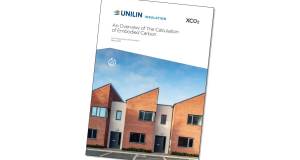 Unilin Ireland launches embodied carbon report
Unilin Ireland launches embodied carbon report -
EIB Group support new low-cost home energy upgrade scheme in Ireland
-
Ireland joins whole life carbon data initiative
-
WorldGBC launches green building policy principles for governments
-
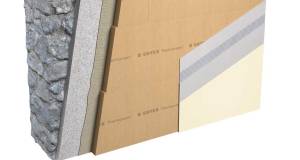 Ecological launches Retro EcoWall for internal wall insulation
Ecological launches Retro EcoWall for internal wall insulation -
 Xtratherm name changes to Unilin
Xtratherm name changes to Unilin -
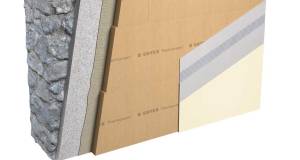 Ecological Building Systems launch Retro EcoWall for internal wall insulation
Ecological Building Systems launch Retro EcoWall for internal wall insulation -
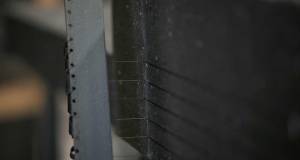 Kore launches low carbon EPS
Kore launches low carbon EPS -
 Kilsaran gets NSAI cert for EWI to steel frame
Kilsaran gets NSAI cert for EWI to steel frame -
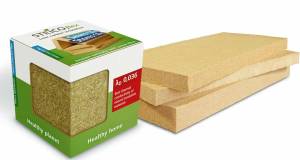 Steico offering free wood fibre insulation samples
Steico offering free wood fibre insulation samples

